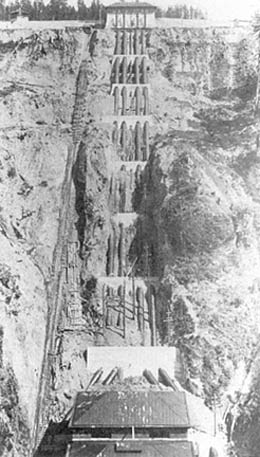On November 6, 1912, Tacoma City Light’s LaGrande Powerhouse on the Nisqually River delivers electricity for the first time. The project makes Tacoma independent of privately owned sources of electricity by supplying all of the city’s needs for the rest of the decade.
When Tacoma purchased the electric utilities of the Tacoma Light and Water Co. in 1893, the system consisted of little more than the streetlights and the system for distributing power. Most current was purchased from street railway companies and from private firms such as the Seattle-Tacoma Power Co. Tacoma wanted to be independent of the Eastern interests who controlled the power companies.
In 1907, City Light investigated building its own hydroelectric plant and found a good location on the upper Nisqually River near LaGrande. The following year, Stone & Webster, the Boston conglomerate that provided most of the city’s current, raised its rates. Then the company shut off power to the city’s water pumps. On January 2, 1909, Tacoma voters approved $2.3 million in bonds for the project, by a margin of three to one.
Tacoma started building a hydro plant at the same time it was building a 43-mile water line from the Green River. Construction of the hydro project began in February 1910, 36 miles southeast of Tacoma at the foot of Mount Rainier. A 35-foot high diversion dam directed water into a settling channel (to remove silt), then into a two-mile tunnel blasted out of solid rock. The tunnel fed four penstocks that dropped 410 feet to a powerhouse equipped with four Allis-Chalmers turbines and generators. A 36-mile transmission line carried the current to a substation at South 25th Street and C Street. The project was completed on time, on budget, and according to plan.
The LaGrande Powerhouse was upgraded in 1945 with the addition of a higher dam to impound more water.

